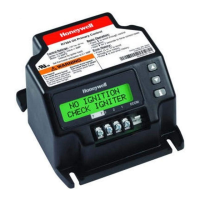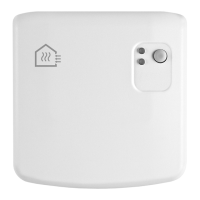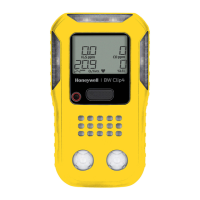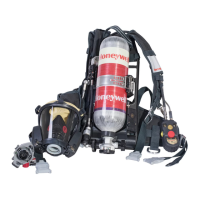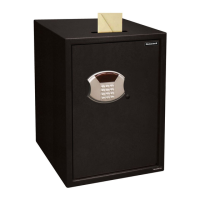18
KNA Burner Manual 9.801-300.0 rev. 8/13
Removing the Nozzle for Service
(Reference the Replacement Parts Diagram)
WARNING
Correct Nozzle and Flow
Rate Required
Incorrect nozzles and flow
rates could result in impaired
combustion, under firing, over
firing, sooting, puff-back of hot
gasses, smoke and potential
fire or asphyxiation hazards.
Use only nozzles having the brand, flow rate (gph),
spray angle and pattern specified by the equipment
manufacturer.
Follow the equipment manufacturer's specifications for
the required pump outlet pressure for the nozzle since
this affects the flow rate.
• Nozzle manufacturers calibrate nozzle flow rates
at 100 psig.
• This burner utilizes pressures higher than 100 psig,
so the actual nozzle flow rate will be greater than
the gph stamped on the nozzle body. (Example: A
1.00 gph nozzle @ 140 psig = 1.18 gph).
For typical nozzle flow rates at various pressures, see
Table 4.
1. Before proceeding, turn off the main power switch
to the burner.
2. Disconnect the copper connector tube assembly
from the nipple of the gun assembly.
3. Remove the nipple and brass plug from the gun
assembly.
4. Remove the two screws securing the igniter to the
fan housing and lift igniter free of the housing.
5. Slide gun assembly free and clear of the fan hous-
ing.
6. Remove nozzle from gun assembly. Be careful
not to damage the electrodes or insulators while
handling.
Section: Perform Regular Maintenance
Nozzle Installation
Perform the following steps when replacing a nozzle.
CAUTION
Protect Nozzle from Damage
A damaged nozzle could cause
impaired combustion, sooting, puffback of hot
gases, smoke, oil leakage and potential fire or
asphyxiation hazards.
• Use care when handling, removing and installing
oil nozzles.
• Carefully follow the guidelines provided in this
section.
1. Remove the gun holder assembly to gain access
to the nozzle (Figure 9).
2. Use a 3/4" open-end wrench to remove the nozzle
adapter from the gun holder.
3. Do not squeeze the electrodes when handling
the gun holder assembly. Excessive force could
change the electrode tip settings or damage the
ceramic electrode insulators.
TABLE 4 - NOZZLE FLOW RATE BY SIZE
Nozzle flow rate U.S. Gallons per hour of No. 2 fuel oil when
pump pressure (psig) is:
Nozzle
Size
(rated at
100 psig)
125
psi
140
psi
150
psi
175
psi
200
psi
0.75 0.84 0.89 0.92 0.99 1.06
1.00 1.12 1.18 1.23 1.32 1.41
1.10 1.23 1.30 1.35 1.46 1.56
1.20 1.34 1.42 1.47 1.59 1.70
1.25 1.39 1.48 1.53 1.65 1.77
1.35 1.51 1.60 1.65 1.79 1.91
1.50 1.68 1.77 1.84 1.98 2.12
1.75 1.96 2.07 2.14 2.32 2.47
2.00 2.24 2.37 2.45 2.65 2.83
2.25 2.52 2.66 2.76 2.98 3.18
2.50 2.80 2.96 3.06 3.31 3.54
2.75 3.07 3.25 3.37 3.64 3.89
3.00 3.35 3.55 3.67 3.97 4.24
3.25 3.63 3.85 3.98 4.30 4.60
3.50 3.91 4.14 4.29 4.63 4.95
4.00 4.47 4.73 4.90 5.29 5.66
4.50 5.03 5.32 5.51 5.95 6.36
